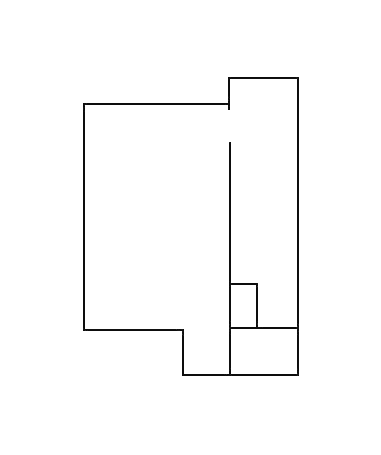Klara Glosova | Wonderland
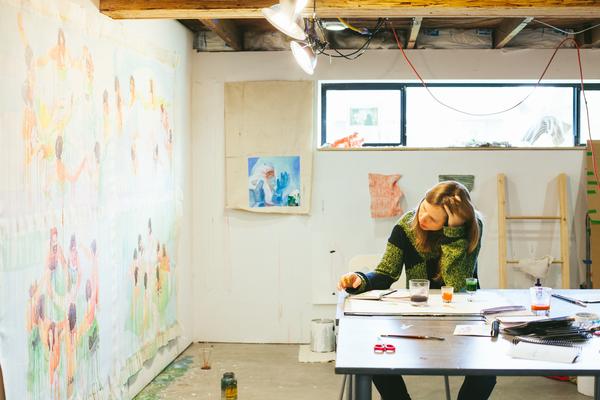
Essay by Gretchen Frances Bennett | Photographs by Andrew Waits
Wonderland:
Klara Glosova uncovers new realities
and moves them sideways into the light
After I visited the studio of artist Klara Glosova, I sought out the scene from the 1980 film, Caddyshack, in which Bill Murray is at the bottom of a drained pool in a hazmat suit. He is there to locate an unknown material. This scene describes that moment when you do not know if the thing you are looking for is “shit, or if it’s candy,” says Klara. Murray locates the mystery object, bites into it and says, There it is. It’s no big deal.
Klara has this same offhand manner when describing her studio practice and the vulnerability of pursuing a body of work, before she knows where it is leading her, but not worrying too much about the outcome. “I never wanted to take it really seriously. If you get too heavy-handed, it becomes dead, and then you are no longer addressing it. Humor or lightness keeps it alive, but doesn’t make it less serious. There is art that leaves out the darkness. There is plenty of darkness in the shadows.”
At first, Klara’s studio explorations feel foreign to her. “I usually pretend no one will ever see it.” A sideways approach. Once it is no longer strange–she gets to know it–then it settles and becomes OK. As she becomes more calm and familiar with the work, it grows in intensity and becomes even sinister—the work becomes wilder.
As she describes her process, Klara seems outwardly casual about following her impulses into the unknown.
Her work reminds me of the film Alice, Czech filmmaker Jan Svankmajer’s stop film animation retelling of Lewis Carroll’s Alices’ Adventures in Wonderland. In the Czech version, Alice falls into a cellar, where she plunges past shelves of preserves, cookies, nails, fire wood and stuffed animals.
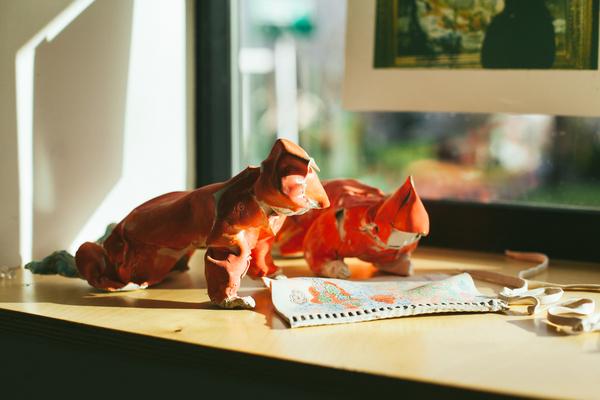
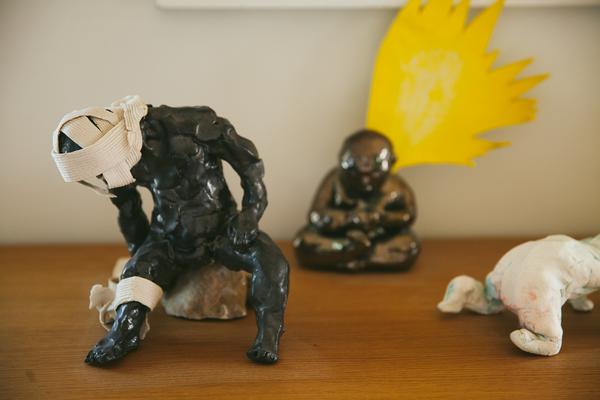
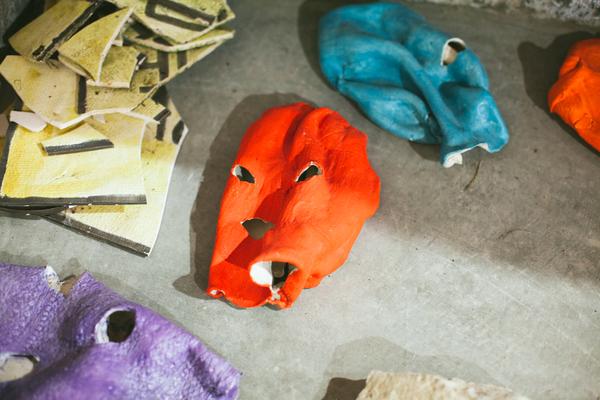
Entering Klara’s studio is like entering a well-lit and airy cellar. And there is much to take in, on shelves, the floor, a table. And though it is crowded, it appears cataloged and presented, in the way a naturalist presents her findings. Like Alice’s cellar, it is part wonderland and part normal. The neat but full arrangement of ceramic works and paintings and furniture and kiln present an array of everyday but also quixotic household concerns.
However strange the initial thought process, Klara follows it, if it holds her interest. “It always happens, what is thought,” she says. “I think it’s the only way for me to speak about anything that matters to me. If it is not interesting to me on some deeper level of discovery, personally, then how can it be of interest to anyone else?”
As I stand in Klara’s studio space, among large-format paintings and clay works, my first read is that they seem to form a collection corresponding to the life of a swimming pool. On the floor there is a diving mask rendered in clay on found concrete with eyes; a stick propped against a wall seems to have a waterline painted on it; and in a painting of a still from Caddyshack, Bill Murray bites a small brown object. There is watery imagery of synchronized swimming men, bringing to mind Matisse and Picasso, dancers and bathers in a strange pool.
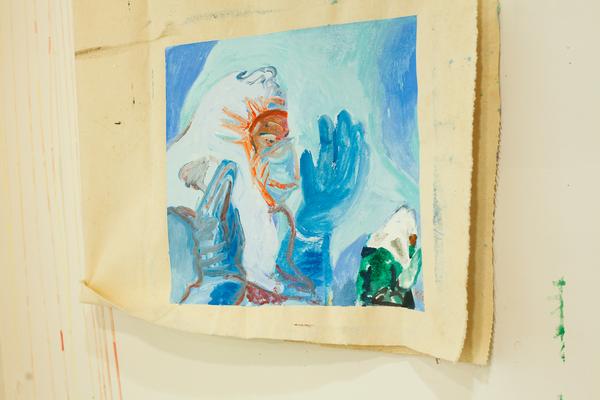
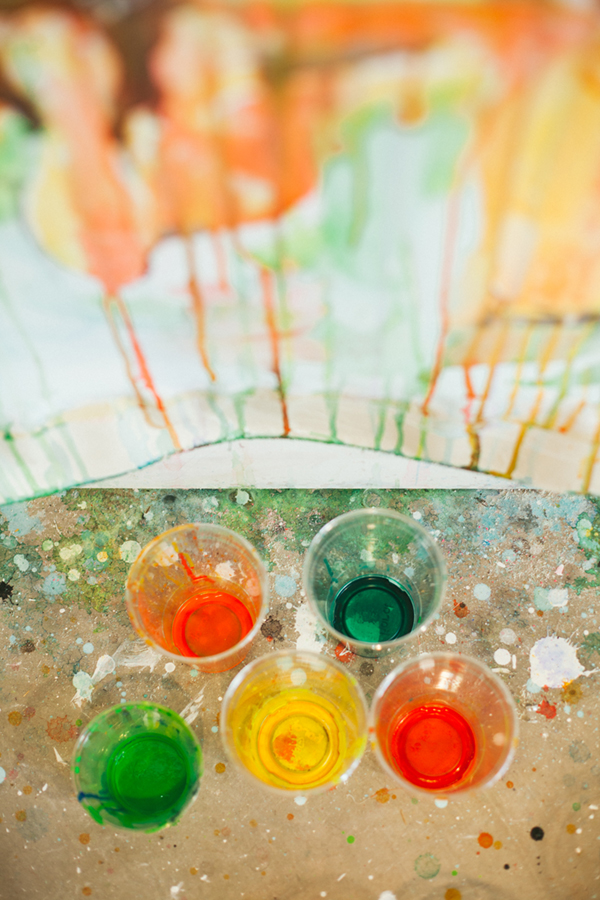
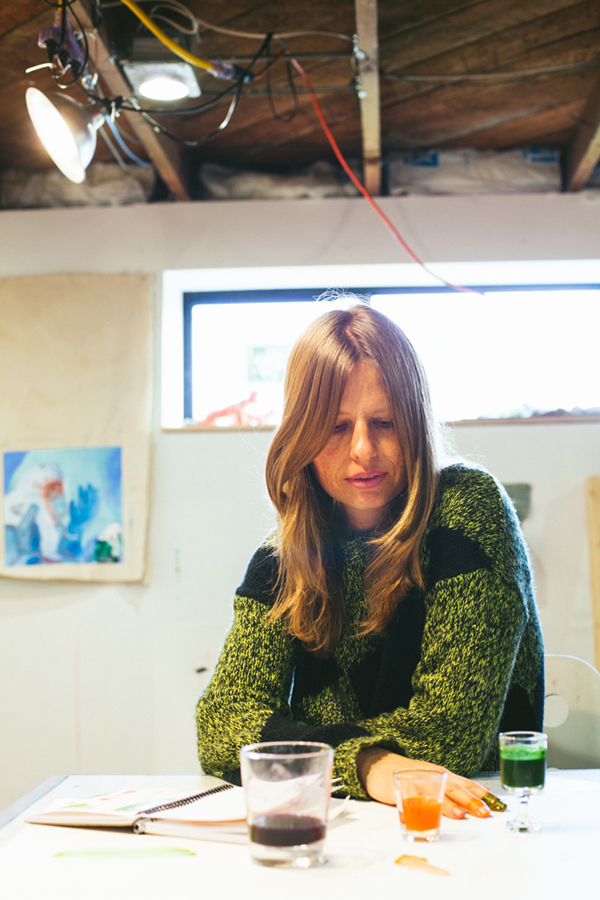
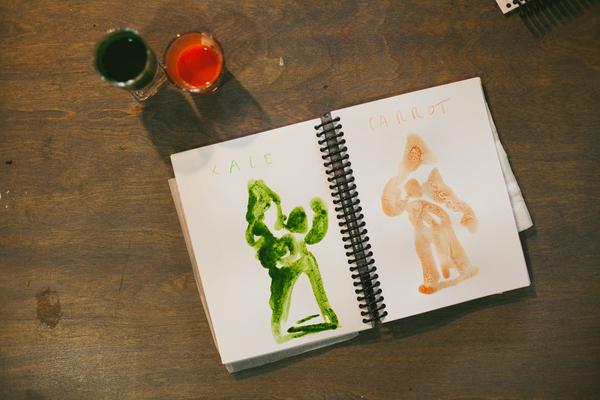
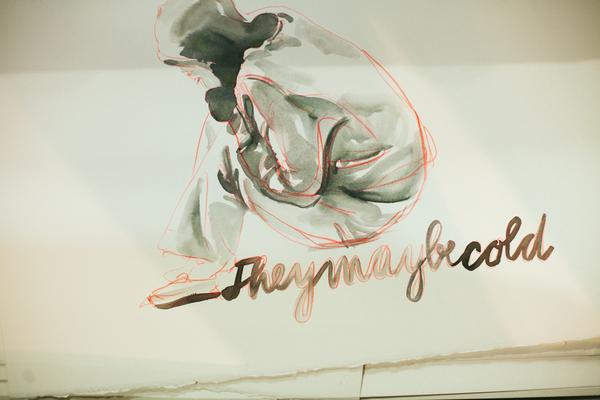
My second read is of normal daily concerns in the work, of repetitive motion labor performed in the privacy of home. There is a photo series of Klara restaging a scene at the bottom of a pool, cleaning, together with video imagery of the artist wearing a red hooded outfit and reenacting a kind of exercise video routine, which feels like housework. Klara becomes like clay in a Svankmajer hand, being arranged and re-arranged, as she does her calisthenics. The work speaks of drudgery, till repeated movements seem to turn exuberant, saying, Look, this is not dangerous, come in, the water is fine. “This may be for nothing, yet, it may be productive. You have to try. You question the value, but then you just get into a rhythm,” burning calories and unwanted toxins and becoming safer.
In the photo series and videos, her red garment gives her head to toe coverage. “Without background information, this can have catastrophic implications”, bringing to mind scenarios of contagion, solitary confinement and system breakdowns.
“In a pool, you are nearly naked, unprotected.” And maybe there is something, “you don’t want to be in touch with it, maybe it’s gross.” This garment isolates her body from the environment, keeps her separate until things stop feeling foreign. A boundary. She works in private, protected, waiting for the right time to re-sync and get out from under, but she seems to need, for a time, to be in it. To get to what is candy and what is not.
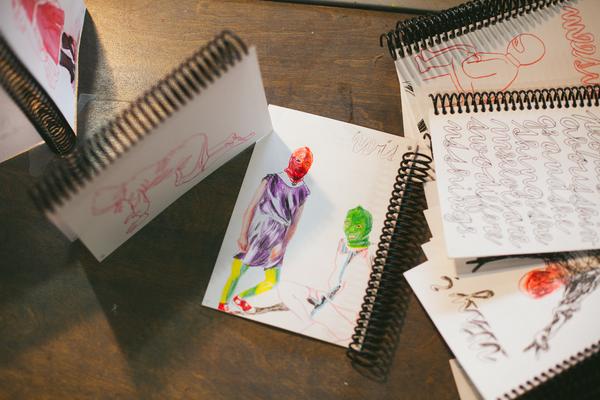
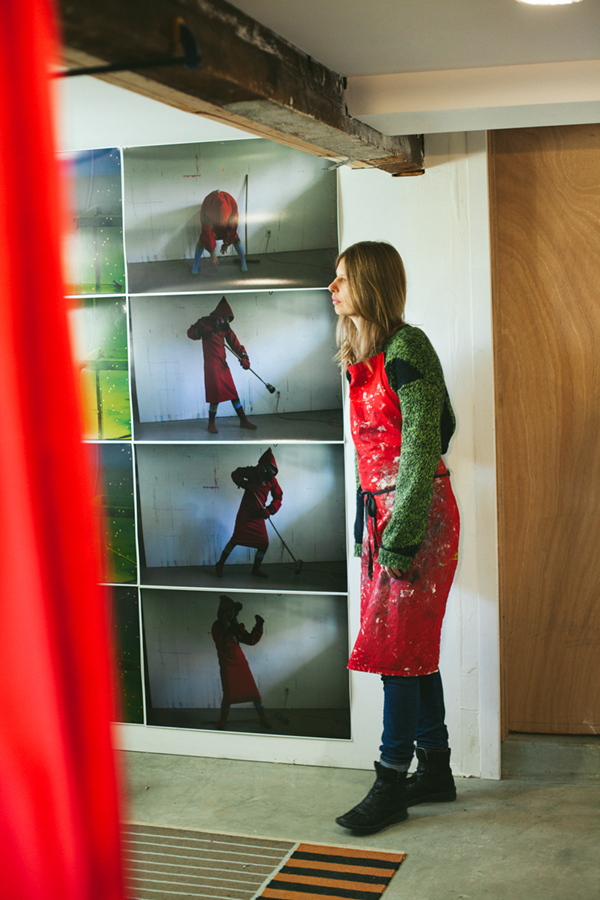
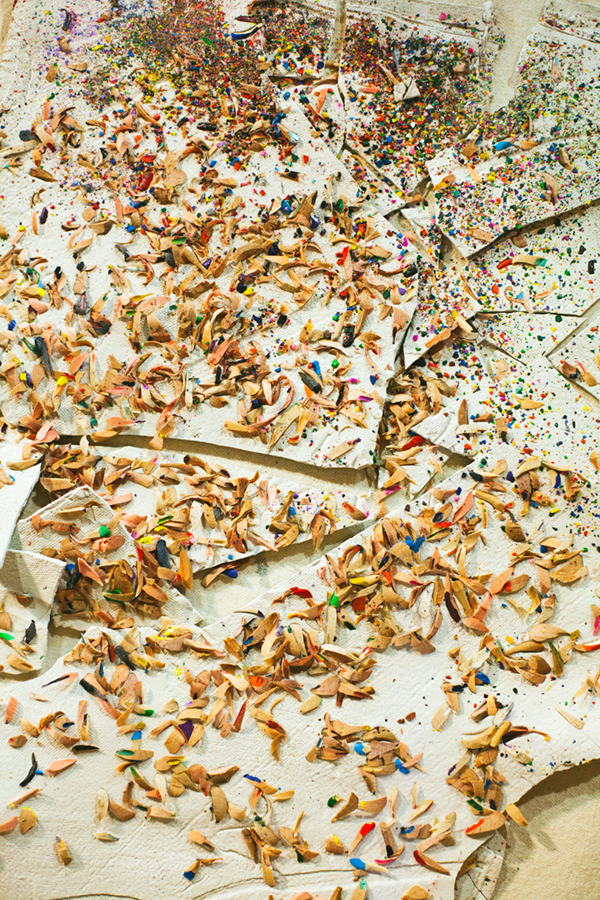
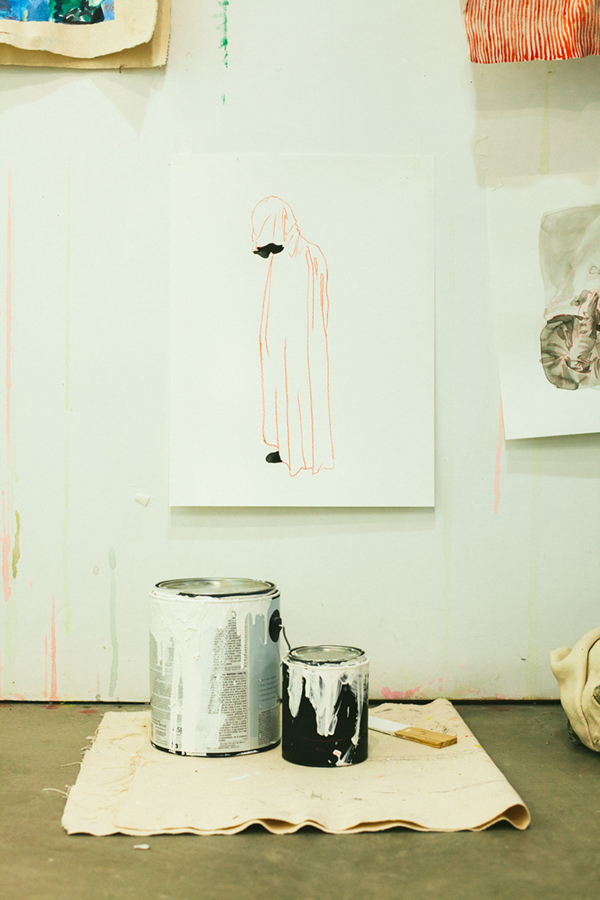
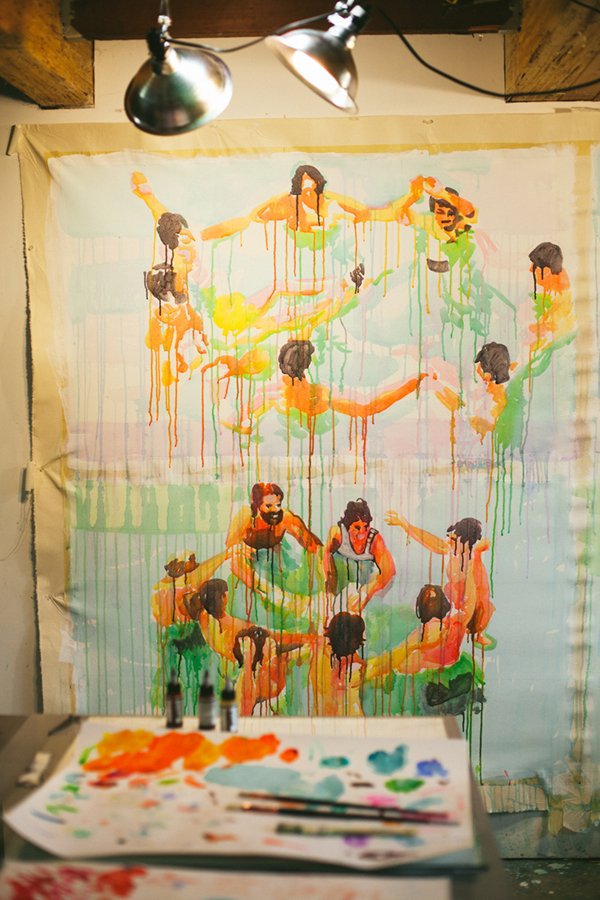
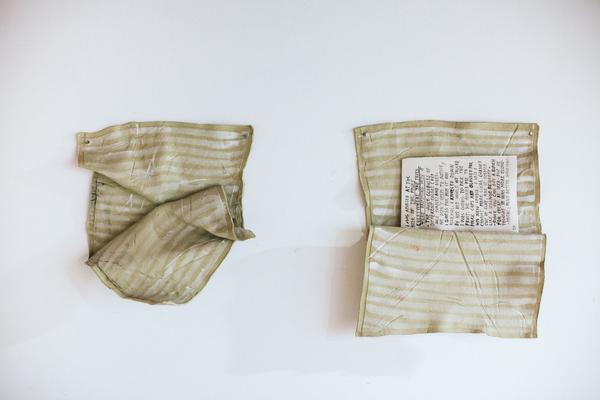
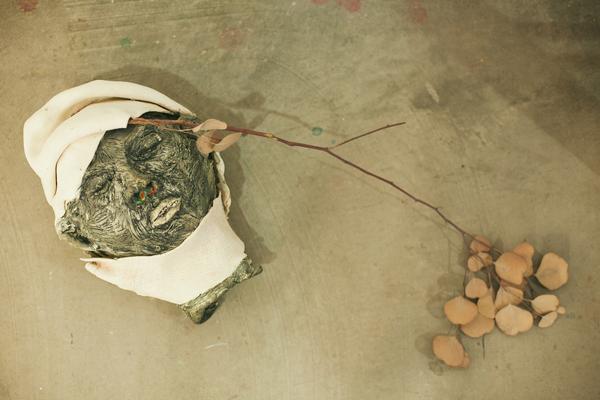
Back to In the Studio
